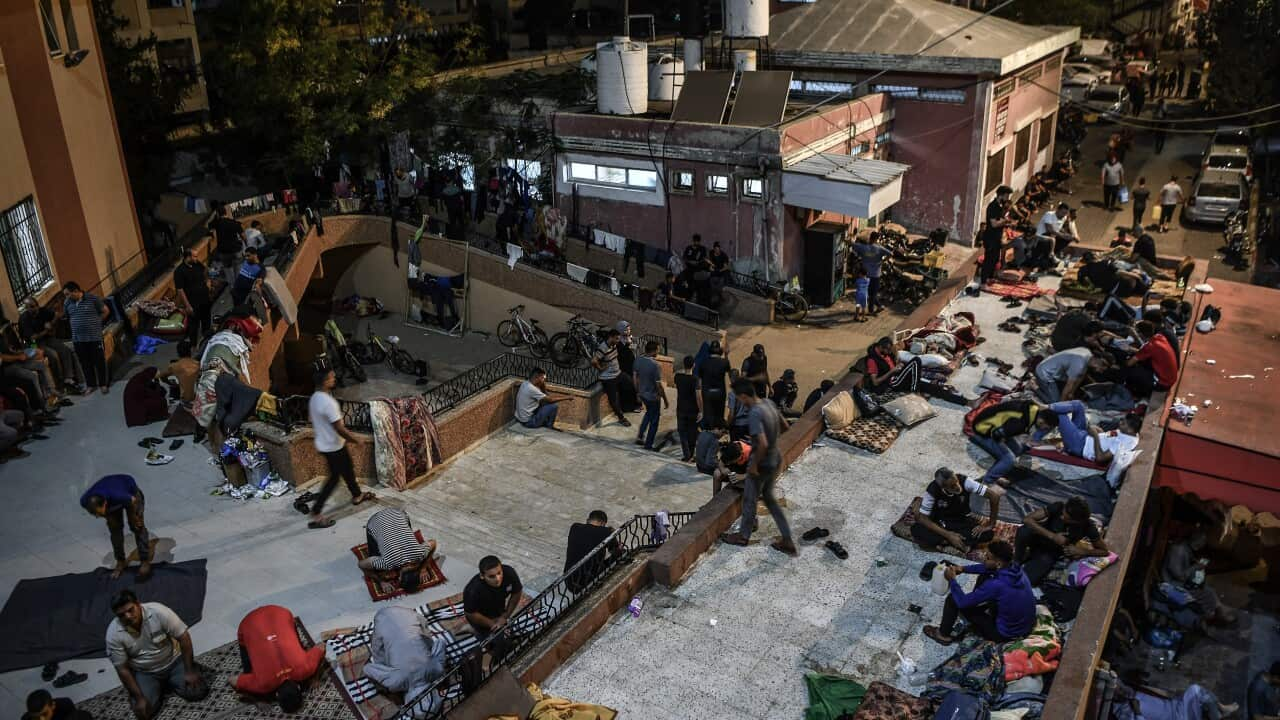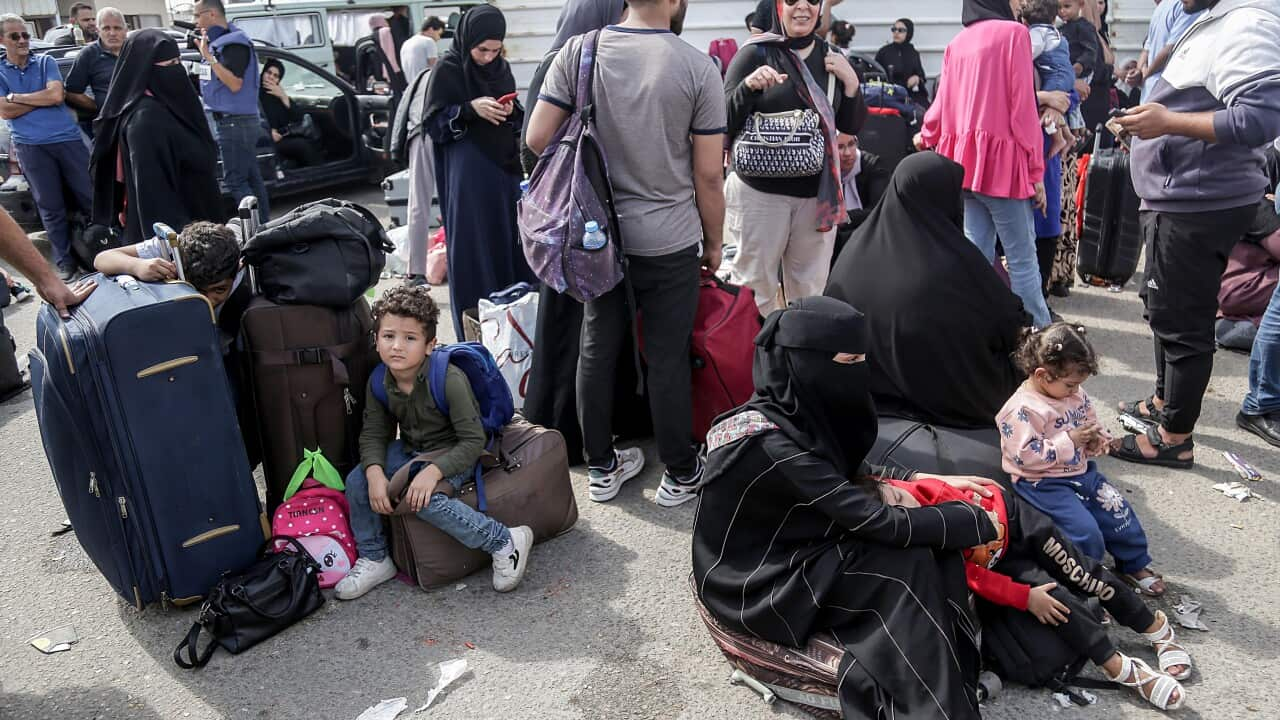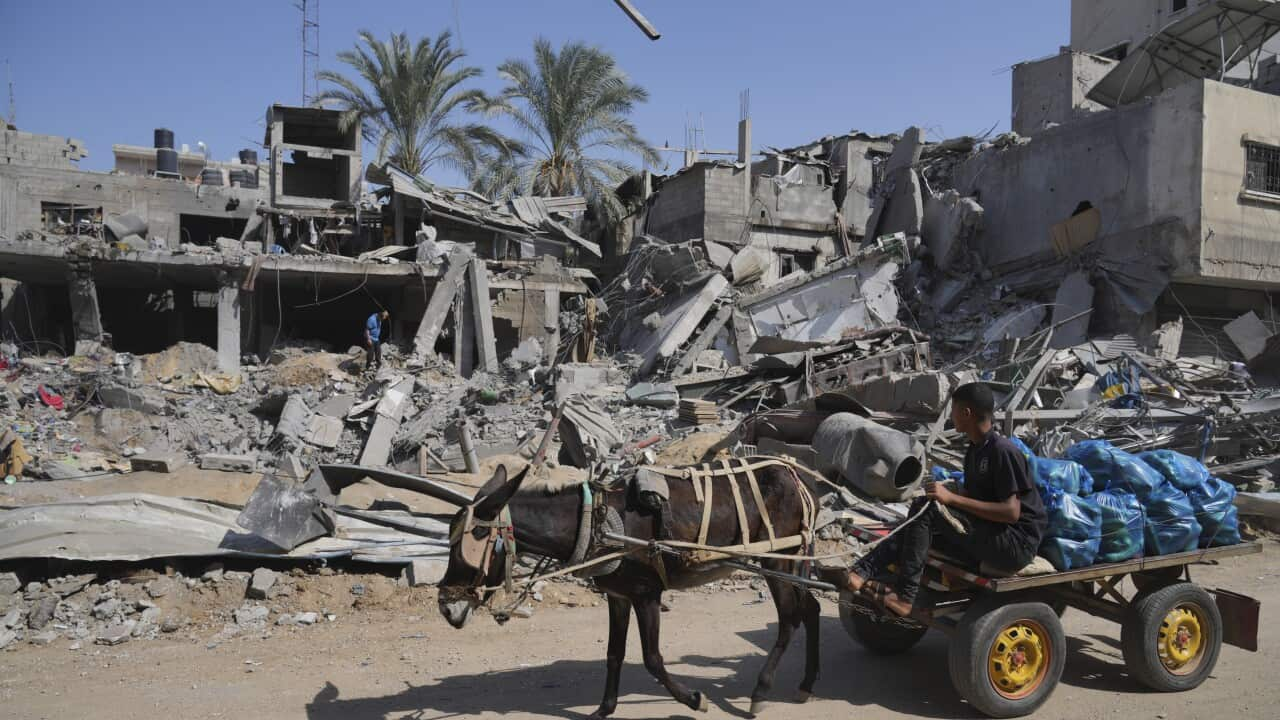Key Points
- Israel is bombarding Gaza in retaliation to Hamas' 7 October attack and has urged Palestinians to head south.
- Very little aid has reached Gaza, a place which is already densely populated and has a high level of poverty.
- Surrounded by Israel and not allowed into Egypt, Palestinians could not flee if they wanted to.
People in Gaza have been told by the Israel Defence Forces (IDF) to move south to stay safe but where exactly can they go?
Israel has bombarded Gaza for weeks following Hamas' unprecedented land, sea and air attack on 7 October.
The Palestinian military and political group's , mostly civilians, and saw more than 200 people taken hostage in a significant escalation in the long-standing conflict between the two.
but thousands of civilians have been killed in the ongoing bombing campaign of Gaza.
In the days following 7 October, the Israeli Defence Forces urged more than a million civilians who live in the to move south for their safety.
Those calls were again reiterated on the weekend and started its long-threatened ground invasion.
But where can Gazans go?
The Gaza Strip
The Gaza Strip, which is 42 kilometres long, and has an estimated population of 2.1 million people, is considered one of the most densely populated places on the planet.
Dr Anas Iqtait, a lecturer at the Australian National University's Centre for Arab and Islamic Studies, explained that people were being urged to move south of the Gaza Valley, "which is basically south of Gaza City towards the two biggest cities in the southern parts of the Gaza Strip, which are Khan Yunis and Rafah.”
It is not known how many people in Gaza followed these orders.
Iqtait said some who had headed south had since returned to the north as Israel Defence Forces had continued to pound targets in the south.
Palestinians fear history repeating
He said many would have remained in their homes in fear that if they left, they would not be able to return.
"The majority of the Gaza Strip’s population are UN-registered refugees. They, or their parents and grandparents, were displaced from their homes to the Strip, and their towns and villages were erased by the newly established Israeli state in 1948. This memory is still vivid in the minds of Palestinians everywhere.”

Gaza's main border crossings.
1.4 million people displaced within Gaza
Iqtait said it was difficult to say how many people had headed south in line with the IDF's orders but said many people were no longer in their usual homes.
According to the United Nations, about 1.4 million people have become internally displaced within the Gaza Strip.
“This doesn't mean that these people moved south of Gaza Valley to the southern parts," Iqtait said.
"Maybe they moved from the northern parts of Gaza City to the central Gaza City, maybe they moved from the south to the north, many of those who moved south have recently come back to Gaza City, because bombardment is also ongoing in Khan Yunis and Rafah."
According to the United Nations, 40 per cent of recorded fatalities have been recorded south of Gaza Valley.
The reality for those who are internally displaced
Iqtait described daily life for those displaced in Gaza as “extremely depressing".
"Hundreds of thousands of these people are staying in health facilities or in schools."

Australian National University lecturer Anas Iqtait said some people in Gaza had moved south only to return to their neighbourhoods because they were no safer. Source: Supplied
"Instead of having the regular five to 10 people in the household, now they are having up to 100 people who are displaced and they're just sheltering in their buildings and this is why as Israel hits more and more residential areas, we have large families that are just completely being killed in this bombardment,” Iqtait said.
He said those heading south would not be met with substantial support.
“[The southern part of Gaza] basically has extremely scarce resources to cope with this influx of people, most of the resources traditionally are based in Gaza City."

Following more than three weeks of bombing, Gaza is buckling under a shortage of basic needs including fuel. Source: Getty / Ahmad Hasaballah
Israel and Egypt are no-go zones
Médecins Sans Frontières (MSF) Australia executive director Jennifer Tierney told SBS News people were not going to relocate if they could see no benefit in doing so.
"Usually when people move as internally displaced people, in the first days of a conflict or a movement, they find shelter and communities," she said.
"These communities are overwhelmed, you can't move from the north to south 1.4 million people and expect those to be absorbed and then the next step would be to flee across borders, that's not an option right now.
"They can't flee across borders, so you've got this cage situation in which people are really unable to seek safety in any meaningful way.”

School yards such as this one in Rafah, have become make-shift shelters for those who have moved south from northern Gaza. Source: Getty / picture alliance/dpa
“At this point, we're not even able to get our international staff out of Gaza, so there is .”
While the southern border of Gaza shares a border crossing with Egypt, the Egyptian government has said it would not take Palestinian refugees due to concerns about the 'economic burden' they could place on the country.
Humanitarian laws and aid
Tierney said "under international humanitarian law in war, governments should do everything that they can to preserve the sanctity of civilians, their health care, safety and right now."
"What we're seeing with this siege, is that civilians have been cut off from the basic necessities of life, and are under almost constant bombing," she said.

Médecins Sans Frontières Australia executive director Jennifer Tierney. Source: Supplied
"It's just not meeting the basic standards of international humanitarian expectations.”
In a press conference in Cairo on Sunday, International Criminal Court Prosecutor Karim Khan said: "Impeding relief supplies as provided by the Geneva Conventions may constitute a crime within the Court's jurisdiction. I want to underline clearly to Israel that there must be discernible efforts, without further delay, to make sure civilians receive basic food, medicine, anaesthetics, morphine."
Tierney said the only way forward was for a ceasefire to be called but said for that, governments needed to "stand up."
Israel has insisted on the right to defend itself following the 7 October attacks, a stance backed by countries including Australia and the United States.
While the United Nations General Assembly moved a resolution calling for an immediate ceasefire to allow aid into Gaza,
Tierney urged the Australian government to “go out harder, faster and stronger on human humanitarian rights.”
She said without governments taking a stronger stance, more people would die.
“It means the death of thousands more civilians. It means a complete inability for us to be able to carry out basic life saving work, means more buildings will be destroyed, more children will die."












